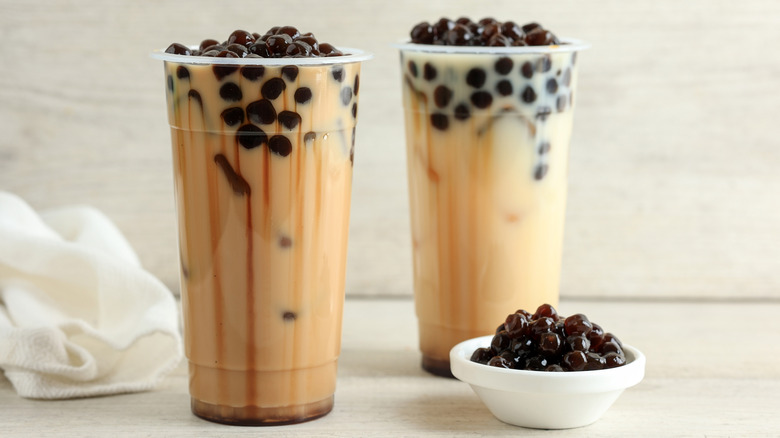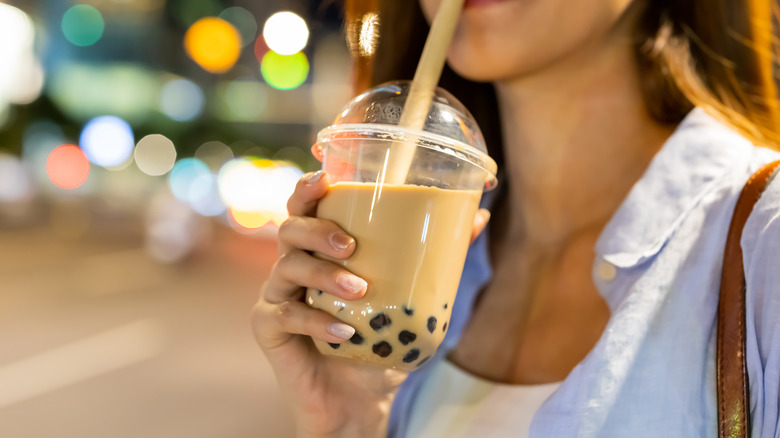Milk Tea Vs Boba Tea: What's The Difference?
Bubble tea — often called boba tea — has exploded in popularity across the United States in recent years, and it's likely to get even more popular as time goes on. The Taiwanese beverage is delicious, sugary, and customizable, meaning there's a bubble tea flavor for just about anyone willing to try it. However, when a product rapidly grows in popularity across a handful of years, misunderstandings become commonplace. In the case of bubble tea, the beverage commonly gets confused with milk tea.
While some people are quick to assume that milk tea and bubble tea are interchangeable terms, this is not the case. Bubble tea is generally classified as a tea-based drink with toppings — typically tapioca pearls, which originated in South Africa — and can be made with or without the use of dairy products. Alternatively, milk tea is tea made with, you guessed it, milk. While this technically makes milk tea a type of bubble tea, not all bubble tea is milk tea.
Why do people mix up bubble tea and milk tea?
Now, while the standard definitions of milk tea and bubble tea make it easy to tell the two apart, there is a valid reason why these drinks have become interchangeable to many boba fans. Milk or cream is used in many of the most popular bubble tea flavors so there's a high chance that the boba you're drinking at any given time is both a bubble tea and a milk tea.
So, why is it important to know the difference? Well, for starters, if you have dairy-intolerant friends who have never tried boba, calling the drink milk tea could deter them from tasting the non-dairy options that many bubble tea shops provide. Furthermore, the Taiwanese milk tea you find at most boba shops is not the only drink of its kind in the world. Hong Kong milk tea is a similarly delicious drink made using sweetened evaporated milk and has a different flavor to the Taiwanese variation, which is made with whole milk. So, knowing the differences (and similarities) between bubble tea and milk tea is vital both at your local boba shop and if you ever find yourself abroad and looking for your favorite tea-based beverage.

